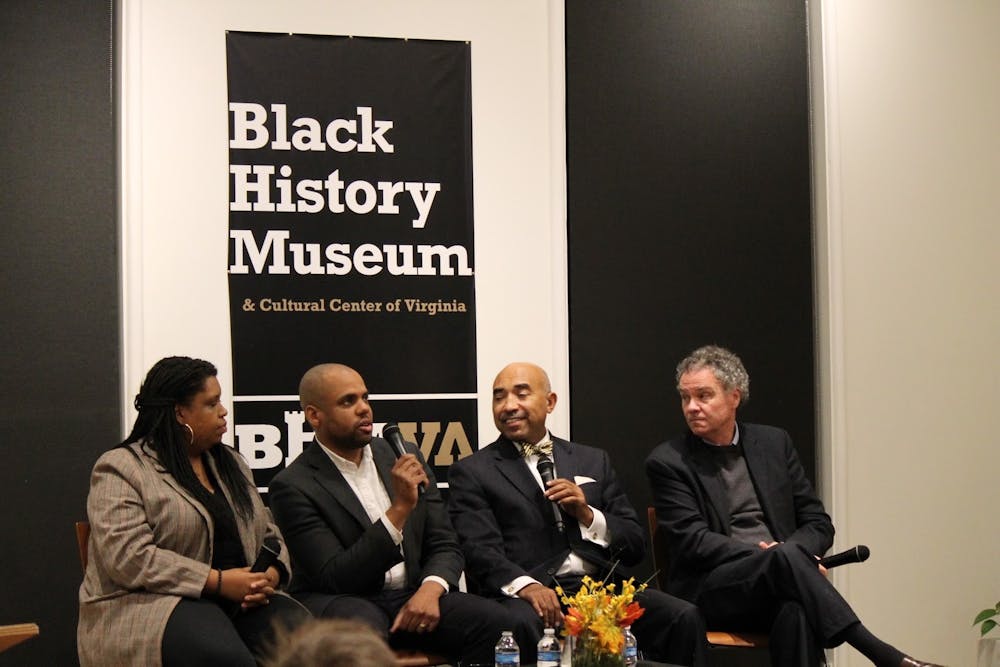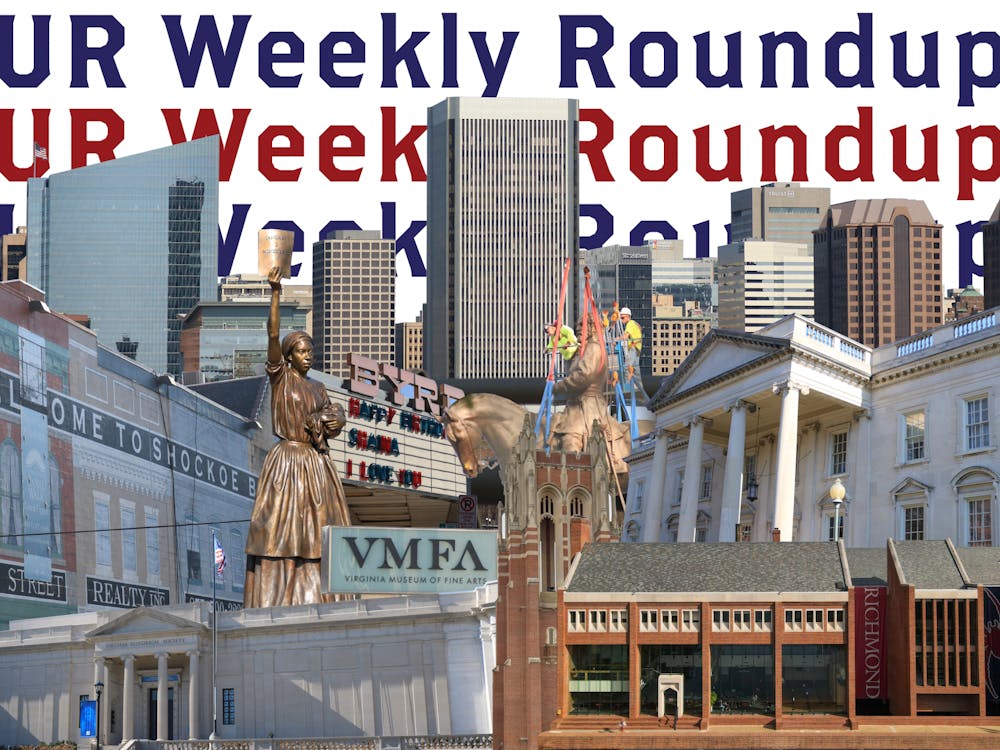In the late summer of 1973, Edward Ayers sat nervously waiting for the chairman of the American studies graduate program at Yale University. Ayers, then 20, had been sure he didn’t belong there. He had shown up unannounced with nothing but a sense that he wanted to be like Tom Wolfe or Richard Marius, and that Yale was apparently the place to be. He looked as though he had spent the past three months living in a car, which he had. He was working for a traveling carnival. His job was to load passengers onto the double Ferris wheel for 12 hours a day. He hadn’t had a haircut in months. A group of Yale boys in blazers told him he looked like Huckleberry Finn. He thought he looked like Neil Young.
Today, Ayers is 66 and a renowned historian of the South.
In 2015, he stepped down after eight years as president of the University of Richmond, where he still teaches. He has won prestigious awards for his scholarship, including a National Humanities Medal awarded to him by then-President Barack Obama in 2013. But he said the award he was most proud of was the 2003 National Professor of the Year award.
“I poured myself into my teaching, even when I was doing other stuff,” Ayers said.
“Other stuff,” for Ayers, means learning multiple regression analysis and coding to help pioneer the age of digital scholarship in the humanities. He’s also taken on top leadership positions, including being dean of arts and sciences at the University of Virginia before assuming presidency of UR.
His provost at UR, Stephen Allred, said Ayers would spend early mornings in the president’s house working on his podcast, “BackStory”, which has peaked at No. 10 among all iTunes podcasts. He also made time to write “The Thin Light of Freedom,” which won the Lincoln Prize in 2017.
And this year, Ayers is a member of Virginia Gov. Ralph Northam’s commission charged with reviewing the standards, practices and resources used to teach African-American history in Virginia schools. Members of the commission include school superintendents, teachers and historians.
The group convened in November at the University of Virginia, Ayers said. It will meet five more times before July 1, 2020, the deadline for its report.
During his presidency, Ayers had taught a summer seminar for teachers nationwide on how to teach the history of slavery and the Civil War.
But focusing on these topics had never been Ayers' original plan.
The tour with the carnival and detour to Yale in the summer of 1973 took place between Ayers’ sophomore and junior years at the University of Tennessee. He graduated in 1974 after his junior year with a bachelor's degree in American studies.
UT is about 95 miles southwest of Kingsport, where Ayers grew up. He remembers the Kingsport of his childhood as segregated but 95% white. Racism saturated everything.
Enjoy what you're reading?
Signup for our newsletter
At Andrew Johnson Elementary, a teacher covered Ayers’ face with burnt cork and had him and another student beat tambourines while the school’s glee club performed songs of the South for an audience of parents.
“So far as I know, no one at Andrew Johnson Elementary, segregated as it was, had any problems with a minstrel show,” Ayers wrote in an essay in 2005.
When Ayers left East Tennessee for Yale in 1975, he had no intention to study the South. He said his decision to study at Yale had been rooted in his admiration for Richard Marius, a Yale graduate and Ayers’ Western Civilization professor at UT. Yale had also produced Tom Wolfe, a pioneer of New Journalism. Like Wolfe, Ayers said he wanted to offer "hip commentary" on American culture. He thought writing for Rolling Stone magazine would be great.
But two Yale professors would prove to be influential: David Brion Davis, who published his book “The Problem of Slavery in the Age of Revolution,” which would win the 1976 National Book Award, the same year Ayers arrived at Yale. And C. Vann Woodward, the eminent southern historian.
In 1979, Ayers was offered a job to teach at UVA, he said. While in Charlottesville, Ayers lectured year after year on slavery, Reconstruction and the New South.
He sent students to UVA’s massive archive to put them in touch with the past. Then, in September 1991, having finished “The Promise of the New South,” which would be a National Book Award and Pulitzer Prize finalist, Ayers had a new vision, he said.
“If you’re looking for early foundational work in digital history, The Valley of the Shadow will be involved in any conversation,” said Robert Nelson, director of UR’s Digital Scholarship Lab.
Started by Ayers in the early ‘90s, the massive digital archive contains newspapers, diaries, letters, maps and records from two counties — Augusta, Virginia, and Franklin, Pennsylvania — from the dawn of the Civil War through its aftermath. The two counties helped Ayers understand how people in such proximity could go to war against each other, he said.
“It’s hard to overstate how new [the Valley] was at that time and how much it informed and shaped everything that has come after it,” Nelson said.
Ayers imagined the Valley as a tool for the public. People could find their own patterns, trace their ancestors’ movements and essentially be their own historians, he said.
“Think of it as a research library in a box,” Ayers explained in a demo for IBM in the mid-'90s.
Much of Ayers' work, including his latest project, focuses on people who remain overlooked.
The place in Ayers’ childhood that made the deepest imprint on him is his grandparents’ farm in the mountainous reaches of North Carolina, he said. He remembers walking with his grandmother over the steep hills of the farm to the blackberry patch or the Cane River.
“Knowing that, in the eyes of the world, she was invisible gave me a deep respect for other people who are invisible,” he said.
Ayers finished shooting the second season of “The Future of America’s Past” this fall, which will be available to stream in May, he said.
In the PBS show, Ayers tours historic sites across the United States and listens to people who have deep connections to those places. In California, he visited a 94-year-old Japanese-American woman who was the “songbird” of the Manzanar concentration camp in California during World War II.
“She sat there and remembered the lyrics of the songs she sang in 1944, locked up in this camp,” Ayers said.
Like everything he does, the show is designed to have a broad appeal.
“It’s a celebration of people who are keeping the memory of these places alive,” he said.
Contact features writer William Roberts at william.roberts@richmond.edu.
Support independent student media
You can make a tax-deductible donation by clicking the button below, which takes you to our secure PayPal account. The page is set up to receive contributions in whatever amount you designate. We look forward to using the money we raise to further our mission of providing honest and accurate information to students, faculty, staff, alumni and others in the general public.
Donate Now



